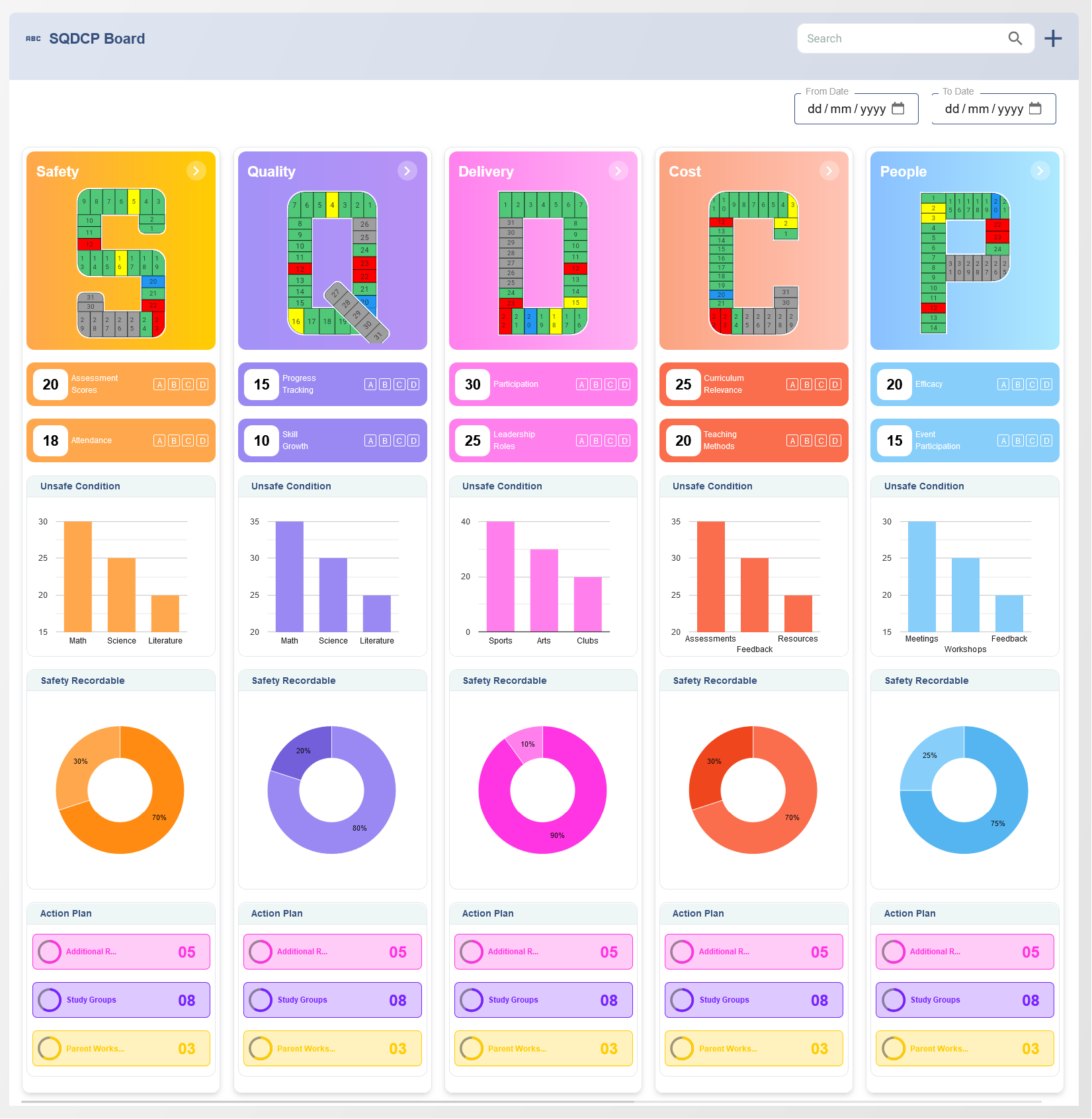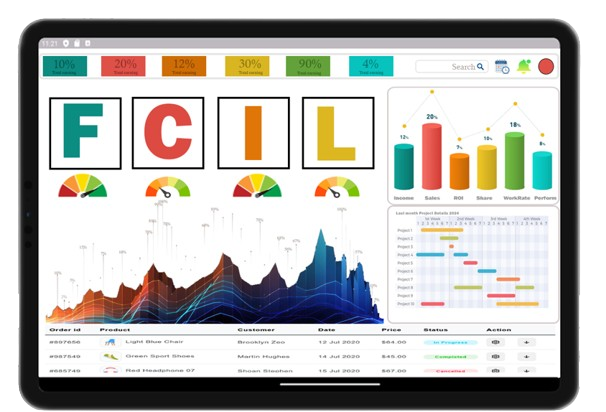In today’s dynamic business environment, organizations face the dual challenge of crafting effective strategies and ensuring their seamless execution. This is where the Balanced Scorecard (BSC) emerges as a transformative framework. Designed to bridge the gap between strategic planning and operational execution, the BSC aligns an organization’s objectives with measurable performance metrics, ensuring that every stakeholder works toward shared goals.

Balanced Scorecard: A Comprehensive Guide
The Balanced Scorecard is a strategic management tool that goes beyond traditional financial metrics. By incorporating perspectives such as customer satisfaction, internal processes, and learning and growth, it provides a comprehensive view of an organization’s performance. This multidimensional approach ensures that businesses remain balanced in their efforts to achieve both short-term financial success and long-term sustainability.
The framework revolves around four key perspectives:
- Financial Perspective: Measures financial performance, ensuring profitability and cost management.
- Customer Perspective: Focuses on delivering value to customers and enhancing satisfaction.
- Internal Process Perspective: Optimizes internal operations to achieve efficiency and quality.
- Learning and Growth Perspective: Develops the skills, culture, and technology necessary for continuous improvement.
By integrating these perspectives, organizations can identify gaps, track progress, and make informed decisions.

Strategy Planning with the Balanced Scorecard
Effective strategy planning begins with defining a clear vision and mission. The Balanced Scorecard provides a structured framework to translate these high-level aspirations into actionable objectives. Here’s how it facilitates strategy planning:
- Defining Strategic Objectives: The BSC encourages organizations to articulate objectives that align with their vision. For example, an objective under the financial perspective might be to increase revenue, while under the customer perspective, it could be to enhance customer loyalty.
- Creating a Strategy Map: A strategy map visually connects objectives across the four perspectives, illustrating how they interrelate. This ensures that all goals are aligned and contribute to the overall strategy.
- Setting Key Performance Indicators (KPIs): The BSC helps identify KPIs for each objective, ensuring that progress can be measured and monitored. These KPIs serve as benchmarks for success, offering a clear picture of whether the organization is on track.
- Allocating Resources: With a clear understanding of strategic priorities, organizations can allocate resources—time, money, and talent—effectively to achieve their goals.
By providing this structured approach, the Balanced Scorecard ensures that strategy planning is comprehensive and actionable.
Managing Strategies with the Balanced Scorecard
Once a strategy is planned, the next challenge is effective management. The Balanced Scorecard transforms strategies from static plans into dynamic management systems. Here are key ways it achieves this:
- Enhancing Communication: The BSC fosters transparency by communicating the strategy across all levels of the organization. Employees understand how their roles contribute to broader objectives, promoting alignment and engagement.
- Regular Performance Reviews: By monitoring KPIs, organizations can conduct regular performance reviews. These reviews help identify deviations from the plan and implement corrective actions promptly.
- Fostering Collaboration: The interconnected nature of the four perspectives encourages cross-functional collaboration. Teams work together to achieve shared goals, breaking down silos and improving overall efficiency.
- Adapting to Change: In a rapidly changing business landscape, flexibility is crucial. The Balanced Scorecard allows organizations to adapt their strategies as needed, ensuring continued relevance and effectiveness.
This proactive approach to management ensures that strategies remain on course, even in the face of challenges.
Executing Strategies with the Balanced Scorecard
Execution is where many organizations falter. The Balanced Scorecard bridges the gap between planning and execution by providing a clear roadmap for action. Here’s how it supports seamless execution:
- Aligning Actions with Objectives: The BSC ensures that day-to-day activities are directly aligned with strategic objectives. This eliminates wasted effort and focuses resources on initiatives that drive results.
- Empowering Employees: With clear objectives and measurable KPIs, employees are empowered to take ownership of their roles. This accountability fosters a culture of performance and excellence.
- Tracking Progress: The Balanced Scorecard provides real-time insights into performance. Organizations can track progress toward objectives and make data-driven decisions to stay on track.
- Continuous Improvement: Execution is not a one-time effort. The BSC promotes a culture of continuous improvement, where feedback loops enable organizations to refine their strategies and processes over time.
By making execution a structured and measurable process, the Balanced Scorecard ensures that strategies are translated into tangible results.
Benefits of Using the Balanced Scorecard
Organizations that implement the Balanced Scorecard often experience transformative benefits, including:
- Enhanced Strategic Alignment: The BSC aligns all organizational activities with the overarching strategy, ensuring cohesive efforts.
- Improved Decision-Making: With data-driven insights, leaders can make informed decisions that drive success.
- Increased Accountability: Clear objectives and KPIs foster a sense of accountability at all levels.
- Better Resource Utilization: By prioritizing strategic initiatives, organizations optimize the use of resources.
- Sustainable Growth: The Balanced Scorecard ensures a balanced focus on financial performance, customer satisfaction, operational excellence, and innovation, driving long-term success.
Steps to Implement the Balanced Scorecard
Implementing the Balanced Scorecard requires a structured approach:
- Define the Vision and Mission: Start by clearly articulating the organization’s vision and mission.
- Identify Strategic Objectives: Develop objectives across the four perspectives of the BSC.
- Develop a Strategy Map: Create a visual representation of how objectives are interconnected.
- Set KPIs and Targets: Establish measurable KPIs and set realistic targets for each objective.
- Communicate the Strategy: Ensure that all employees understand the strategy and their roles in achieving it.
- Monitor and Review: Regularly track performance, review progress, and adapt strategies as needed.
This systematic implementation process ensures that the Balanced Scorecard is effectively integrated into the organization’s operations.
Conclusion
The Balanced Scorecard is more than just a performance measurement tool; it is a comprehensive framework for strategic planning, management, and execution. By aligning objectives across financial, customer, internal process, and learning perspectives, the BSC ensures that organizations remain focused on their goals while adapting to changing environments.
FAQs: Effectively Executing Strategies: The Power of the Balanced Scorecard in Strategic Planning and Execution
1. What is the Balanced Scorecard, and why is it essential for strategic planning and execution?
The Balanced Scorecard (BSC) is a strategic management tool that translates an organization’s vision and strategy into actionable objectives across four key perspectives: financial, customer, internal processes, and learning and growth. It ensures that strategic goals are aligned with day-to-day activities, fostering better execution and measurable outcomes.
2. How does the Balanced Scorecard facilitate strategy execution?
The BSC bridges the gap between strategy and operations by defining clear objectives, measurable targets, and actionable initiatives. It integrates performance metrics across all levels of the organization, enabling alignment, accountability, and continuous improvement in executing strategic goals.
3. What are the four perspectives of the Balanced Scorecard?
The BSC focuses on four perspectives: - **Financial**: Measures financial performance and profitability. - **Customer**: Focuses on customer satisfaction and retention. - **Internal Processes**: Optimizes internal operations and workflows. - **Learning and Growth**: Develops organizational capabilities and employee skills.
4. Can the Balanced Scorecard be customized for different industries or organizations?
Yes, the BSC is highly flexible and can be tailored to suit specific industries, organizations, or departments. Customization involves selecting relevant objectives, metrics, and initiatives that align with an organization’s unique goals and market conditions.
5. What are the key components of an effective Balanced Scorecard framework?
An effective BSC includes: - A clear vision and strategy. - Well-defined objectives for each perspective. - Key Performance Indicators (KPIs) to measure progress. - Strategic initiatives to achieve the objectives. - A feedback mechanism for continuous improvement.
6. How does the Balanced Scorecard improve communication within an organization?
The BSC provides a shared framework for understanding strategic goals and progress. It enhances communication by aligning all departments and teams around common objectives, ensuring that everyone works towards the same outcomes with clarity and focus.
7. What role does technology play in implementing the Balanced Scorecard?
Technology simplifies BSC implementation through software solutions that automate data collection, monitor KPIs, and generate real-time performance reports. These tools make it easier to track progress, identify gaps, and make data-driven decisions.
8. How does the Balanced Scorecard drive organizational performance improvement?
The BSC fosters performance improvement by setting measurable goals, tracking progress, and identifying areas for enhancement. Its integrated approach encourages a holistic view of performance, promoting efficiency, innovation, and long-term success.
9. How often should organizations review their Balanced Scorecard?
Organizations should review their BSC regularly—typically monthly or quarterly—to evaluate progress, address challenges, and update strategies. Continuous review ensures the BSC remains relevant and aligned with changing business environments.
10. What are the common challenges in implementing the Balanced Scorecard, and how can they be addressed?
Common challenges include lack of leadership commitment, unclear objectives, poor communication, and resistance to change. These can be addressed by securing top-level buy-in, clearly defining objectives, engaging employees, and providing ongoing training and support for successful implementation.